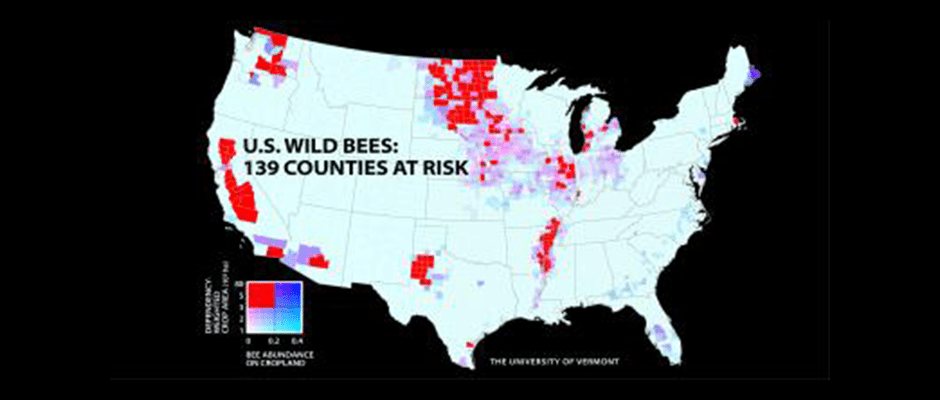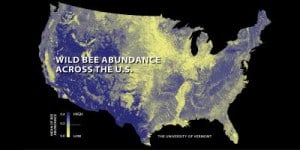Share this article
Researchers Create Wild Bee Abundance Map in U.S.
When it comes to wild pollinators, a lack of cohesive information makes it difficult to know much about bee abundance in the United States.
“Without knowledge of the current status, we cannot implement future strategies,” said Insu Koh of bees. Koh is a post-doctoral associate at the University of Vermont and the lead author of a recent study published in the Proceedings of the National Academy of Sciences.

A research team led by Insu Koh (right) and Taylor Ricketts, estimates that wild bee abundance between 2008 and 2013 declined in 23 percent of the contiguous US, potentially threatening US crop production. ©Sally McCay, UVM
Researchers don’t have a lot of information on wild bee populations since there aren’t many cohesive, ongoing programs to monitor populations similar to those monitoring birds. But Koh and his coauthors drew information from nearly 500 sites from previous studies on abundance to create a more cohesive idea about bees in the U.S. He said that the map is one of the first of its kind for the U.S., and that it was created in response to the call in June 2014 by the White House for a national assessment of wild pollinators and where they lived.
The map is actually three maps: the first a map of wild bee abundance; the second a map highlighting uncertainty of bee abundance; and the third showing how wild bee abundance has changed in the U.S. from 2008-2013.
The third map shows 139 counties across the nation that are primarily concentrated in California, parts of the Pacific Northwest, the Mississippi River Valley and the upper Midwest where bees are most likely declining, These areas also tend to have high pollination demands due to intensive agriculture.
“These areas have a mismatch between the wild bees supply and pollination needs.”
Areas that harbor a more healthy supply of wild bees included Vermont, many natural, temperate forest zones and parts of the Pacific Northwest not important to agriculture.
Koh said he hopes that this map can help researchers monitor wild bee abundance in the U.S., and direct future bee surveys into areas with high levels of uncertainty.
“This map can also help to direct habitat restoration efforts to where they will most benefit bees and farmers,” he said.
Header Image:
A new study of wild bees shows 139 counties in key agricultural regions of the U.S. with falling wild bee populations and rising crop pollination demand.
©PNAS









